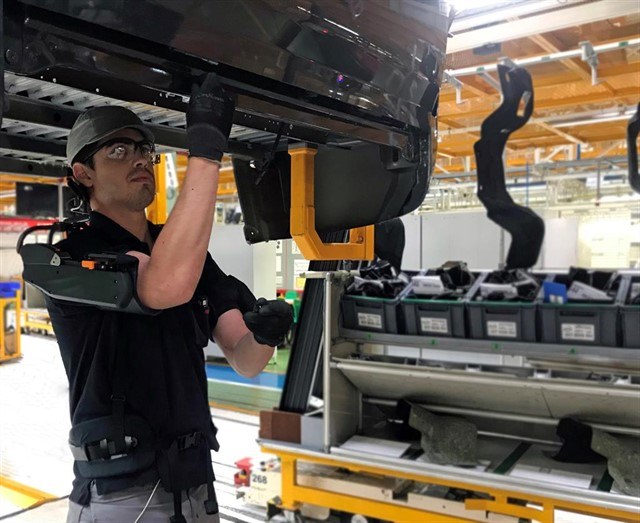The BIOMEC Lab participates in a pioneering project to introduce exoskeletons to the automotive industry
Feb 14, 2019
-
The use of exoskeletons in automotive industrial production processes can reduce the muscular effort of workers by up to 60%. This figure is derived from a study, driven by the Cluster of the Automotive Industry of Catalonia (CIAC), in a controlled environment with Nissan and Meleghy Automotive workers who have tested exoskeletons in the lower limb area, in maintained positions. In addition to the entities mentioned above, the Biomechanical Engineering Lab (BIOMEC) of the Department of Mechanical Engineering at UPC, the Catalan Institute of Occupational Health and Safety (ICSSL), the SGS company and the Eurecat technology center participated in the project.
This is the only initiative developed so far to evaluate the viability of this disruptive technology in the automotive industry that has the approval of the Administration and that represents a revolution and a challenge for companies in the sector.
The study, led by the CIAC's Technology Commission, has completed its first phase in a controlled environment, with monitored surface electromyography tests carried out jointly by the eHealth Unit of Eurecat and the UPC BIOMEC Lab, to evaluate the muscular activation of the workers with the use of 3 types of exoskeletons, and without them, on an active workforce composed of 14 Nissan and Meleghy Automotive workers, 11 men and 3 women between 25 and 57 years old.
From this first evaluation it is clear that the lower extremities exoskeleton, in maintained positions, reduces by 60% the muscular effort in the quadriceps (rectus femoris, vastus internal and external), with a decrease also significant in the activation of the rest of the muscles of the legs.
It has also been shown that the shoulder exoskeleton, in positions maintained above this area, has meant a reduction of muscle activation of 15% in the posterior and anterior part of the trunk (cervical, lumbar and abdominal erectors), while the biceps, deltoids and dorsal muscles also saw their activation diminished.
In relation to the mixed shoulder-back exoskeleton, the result has been a reduction of muscle activation in the deltoids, biceps and dorsal muscles of 15%, as well as a significant decrease also of the muscular activity of the cervical (25%) and lumbar erectors (between 10% and 15%).
Given the good results of this first phase of the project, CIAC and the companies involved will carry out between February and March the second and last phase of exoskeleton testing with Nissan and Meleghy Automotive workers in their real production environment, with a duration of the tests of complete shifts of work, in order to obtain the definitive conclusions.

Share: